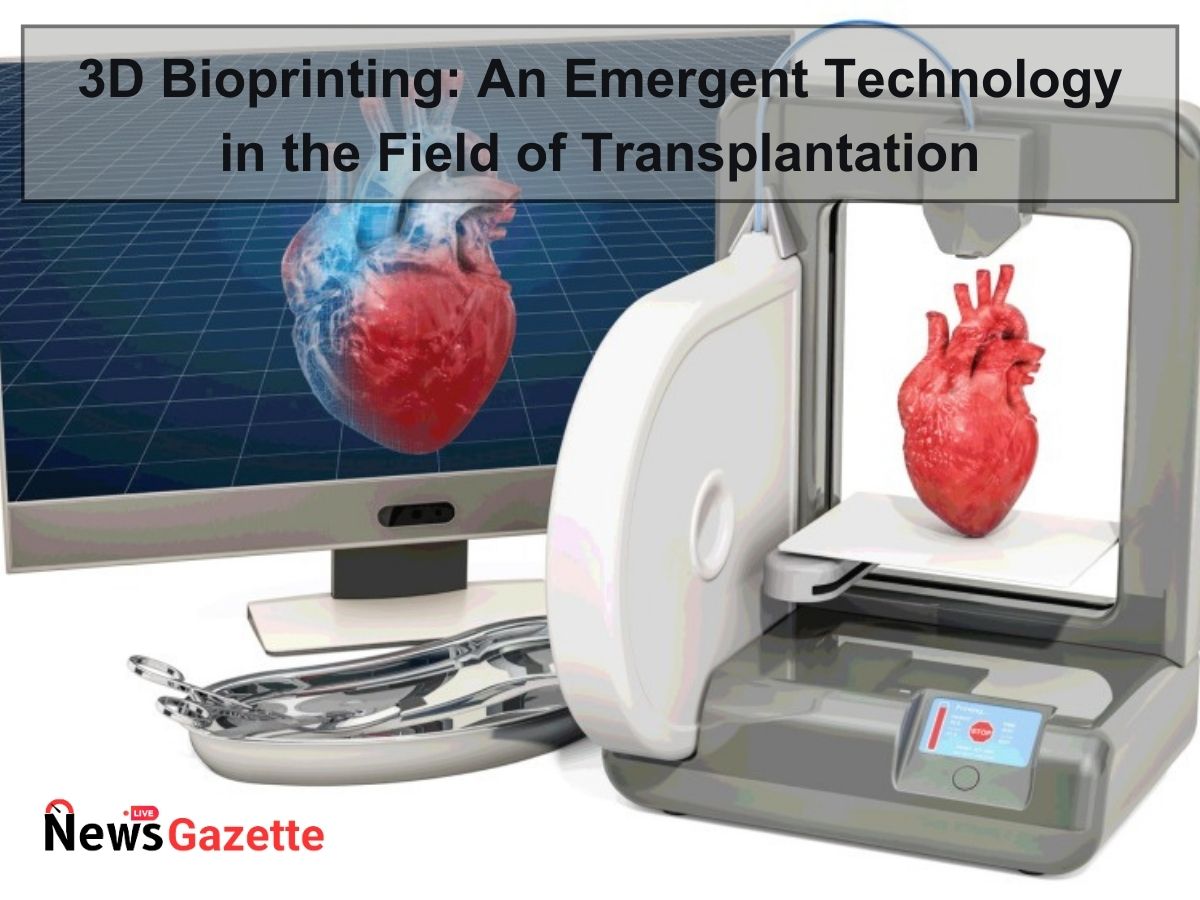
3D Bioprinting: An Emergent Technology in the Field of Transplantation
The first instances of 3D printing could be found in 1980, wherein UV polymerizing resin was used to create a three-dimensional model, layer by layer. As time passed, the fascination with this technology grew. From hobbies to décor, then architecture, 3D printing began to make its presence known in medicine. Here, 3D printing formed its known niche and became known as 3D Bioprinting. Taking an instance, Tongi Hospital, China, developed bio prints of human ovaries in 2022. This was done using murine ovarian cells and a bioengineering hydrogel, gelatin methacryloyl (GelMA).
3D printing and transplantation
3D bioprinting technology carries a vast market that will continue to grow in the coming years. Even cosmetic and prosthetic implants can be printed using this technology. The exponential increase in demand for donor organs and tissue can also be controlled. 3D-printed prototypes can be used as a replacement for live animals during clinical and pre-clinical testing. Although it seems something out of a Sci-fi novel, this technology has mastered simple objects like blood vessels, skin grafts, bones, muscles, retinal sections, miniature organs, etc.
A significant achievement of the Wake Forest Institute for Regenerative Medicine was their portable skin bioprinting system. Despite its vast potential in burn cases and cosmetic surgery, the institute developed skeletal muscle constructs to reestablish up to 80% of muscle function loss. In the field of prosthetics, 3D bioprinters have been used to produce exterior structures like ears and noses using a scaffold. Toulouse University Cancer Institute and CERHUM bioprinted the cartilage, muscle, and skin of the nose on a scaffold for a patient who had facial trauma.
Read Also: First FDA-approved MS therapeutic: Tyruko® (natalizumab-sztn)
Recent discoveries and ongoing research
Highlighting the role of bioprinting in the transplantation field, Arturo Bonilla, of Microtia-Congenital Ear Deformity Institute in San Antonio, Texas, was able to this ear to a 20-year-old woman born without one. The catch is that the ear was Bio-printed with the cartilage cells extracted from the woman. This surgery was the first ever bioprint successfully implanted in a human. Polish researchers successfully printed and tested the pancreas complete with a vascular system. Another company, United Therapeutics Corporation, boasted their 3D-printed human lung would be cleared for testing and trials in another five years.
On the other hand, Trestle Biotherapeutics, a U.S. based company, has been tirelessly working to develop 3D-printed kidney tissue for patients with end-stage renal disease. In line with their goal to provide patients with an alternative to dialysis and extend the duration to find a compatible kidney, several prototypes of renal tissue have been developed.
Another significant ongoing in the field of cardiovascular conditions is the project Heart-on-a-chip. Space Application Services, QbD Group, SCK CEN, BIO INX, and Antleron have developed the code to print a fully functional human heart prototype and stored it on a microchip. The chip, along with bioink, 2D bioprinter, and other miscellaneous apparatus, will be sent to space in 2025. The conditions in space will facilitate rapid organ aging, enabling researchers to study various diseases and aging-related conditions in a short time frame and remotely.
Dr. Axel Krieger and his colleagues at Johns Hopkins University, Maryland, shocked the world with their Smart Tissue Autonomous Robot, STAR. STAR uses artificial intelligence (AI) and machine learning (ML) technology to the tissue area undergoing surgery and provides a course of action using several algorithms. After the surgeon’s approval, the flexible robotic arm can automatically incorporate the bioink on the target region.
According to data collected in March 2023, approximately 100,000 are registered on the national organ transplant waiting list. However, on average, 6,000 live donor organs and 28,000 deceased donor organs are available annually. Loss of these organs due to time-related degradation, compatibility issues, and post-surgery complications can be detrimental. 3D bioprinted organs reduce the risk of post-transplantation problems due to compatibility. As the organs are generally printed from the recipient’s cells, genetically, it’s a perfect match. The medical professional can customize the dimensions of the organ. This will also nullify the need for a donor person or animal.

Carae Wagner specializes in reporting on the healthcare sector, with a specific emphasis on digital health, gene therapy, viral vectors, and public policy. She holds degrees in English and Psychology from the University of Virginia. Her writing has been featured in publications such as Forbes, Slate, C-Ville Weekly, and various others. She maintains a focus on anxiety disorders and depression and aims to explore other areas of mental health including dissociative disorders such as maladaptive daydreaming.
